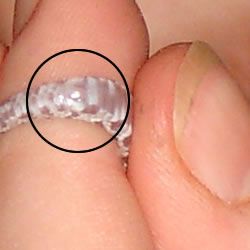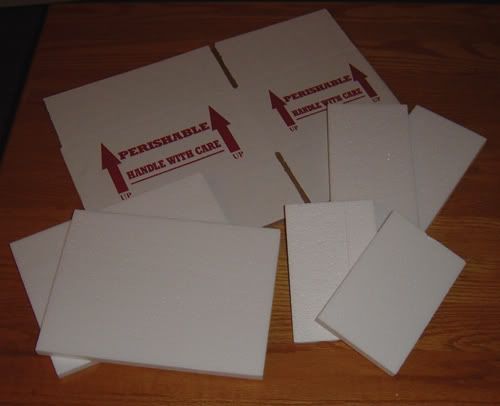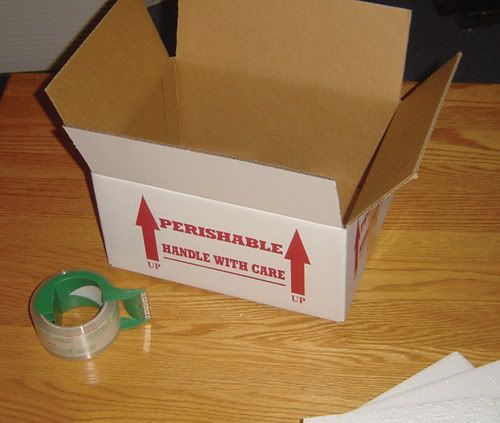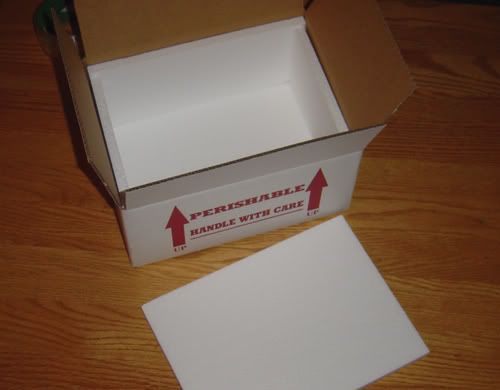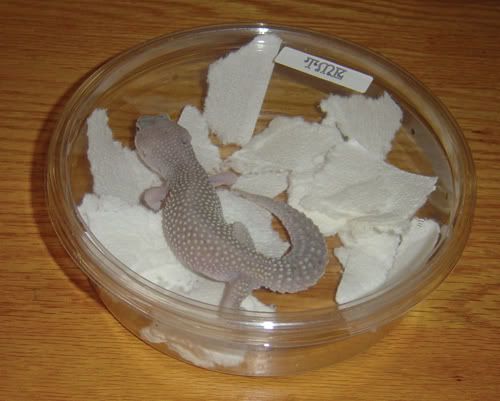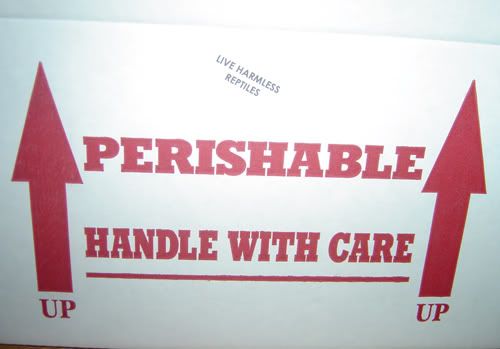Genetics & Morphs
This Genetics FAQ brought to you by Joe of www.calascorns.com
_________________________________________
DEFINITIONS:
Q: What is a gene?
A: A hereditary unit consisting of a sequence of DNA that occupies a specific location on a chromosome and determines a particular characteristic in an organism.
Q: What is a locus?
A: The position that a given gene occupies on a chromosome.
Q: What is an allele?
A: Any of the alternative forms of a gene that may occur at a given locus.
Q: What is meant by a characteristic?
A: A characteristic is anything in the phenotype that differs from the wild type phenotype.
Q: What does the term 'homozygous' mean?
A: Having the same alleles at a particular gene locus on homologous chromosomes.
Q: What does the term 'heterozygous' (het.) mean?
A: Having different alleles at one or more corresponding chromosomal loci.
Q: What is meant by a gene being dominant?
A: A gene that is expressed phenotypically in heterozygous or homozygous individuals.
Q: What is meant by a gene being recessive?
A: A gene that is phenotypically expressed in the homozygous state but has its expression masked in the presence of a dominant gene.
Q: What is meant by a gene being codominant?
A: Genes that are on a given loci that are both expressed in some degree.
*- The definitions of dominant, recessive and codominant imply a comparison to the wild-type. If one says that some gene is dominant without specifying to which gene, it is assumed that it is dominant to the wild-type.
Q: What is the 'wild-type'?
A: The wild type phenotype is the most common phenotype found in the wild population. The wild type allele is the allele at each locus that is required to produce the wild type phenotype. There are thousands of loci in the corn snake genome, and there is a wild type allele at each locus. If a gene is not expressly identified, it is assumed to be wild type.
Q: What does the term 'genotype' mean?
A: The combination of alleles located on homologous chromosomes that determines a specific characteristic or trait.
Q: What does the term 'phenotype' mean?
A: The observable physical characteristics of an organism, as determined by it's genetic makeup.
Q: What is a Punnett Square?
A: A type of grid used to show the gametes of each parent and their possible offspring; a type of grid that can indicate all the possible outcomes of a genetic cross.
Q: What is a morph?
A: One of various distinct forms of an organism or species.
Q: What is a cultivar?
A: A variety of a plant or animal that has been created or selected intentionally and maintained through cultivation.
_________________________________________
APPLICATIONS:
Q: Can I tell the genotype of my snake just by looking at it?
A: Technically, no. For the most part it is impossible to tell if a snake is heterozygous for any given trait without doing breeding trials.
Q: What morphs are co-dominant?
A: The (DD) diffusion gene is (variably) codominant to (D+) it's wild-type counterpart. The (aa) amel and (au) ultra genes are codominant to each other, and both are recessive to (A+) their wild-type counterpart.
Q: What does 50% het or 66% het mean?
A: Both percentages reflect the statistical probabilty that each egg, not the clutch as a whole, will be some genotype xyz. If you breed two snakes that are both normals het amel together, the resulting statistical probabilty will be as follows: 1/4 amels, 1/4 normal, 1/2 normal het amel. Disregard the amels as they are showing the trait and cannot be het for it, and you are left with all normals, some het for amel and some not. Theoretically 1/2 out of 3/4 of the normals will be het for amel. 0.5 / 0.75 = 0.66667%.
The same holds true regarding 50% het. A normal x normal het amel will give all normal offspring, 50% being het for amelanism.
Q: What is an ultramel?
A: An ultramel has one amel gene, and one ultra gene. Since the genes both occur at the 'amel locus' and are co-dominant to each other, the resulting animal is one that looks something between an amel, and a hypo. Since this is a new morph, expect a lot of variation, especially due to the co-dominance. Ultramels can be made by crossing an ultra x amel = 100% ultramels, or by crossing ultramel x ultramel, ultramel x amel, or ultramel x ultra.
Q: How do I use a Punnett square?
A: A Punnett square is used to determine the possible outcomes of a cross. Links on how to do Punnett square crosses are found here:
_________________________________________
Note: Mick's Cornsnake Progeny predictor is a great way of calculating possible outcomes AFTER you have learned how to do it by hand, and fully understand the way it works. Simply clicking on boxes and hitting calculate will not help you truly understand why you get 50% caramels from a caramel x normal het caramal pairing. The program can be found here:
http://home.comcast.net/~spencer62/cornprog.html
_________________________________________
Morphs
*Pictures of most morphs can be found at
www.SerpenCo.com,
www.cornsnake.net,
www.supernovareptiles.com/csmorphs.html.
_________________________________________
Single recessive - Amelanistic, Anerythristic, Charcoal, Hypomelanistic A, Sunkissed, Lava , Ultra, Caramel, Bloodred*, Lavender, Motley, Aztec/Zigzag*, Stripe.
Double recessive - Butter, Amber, Snow, Ghost, Pewter, Granite, Blizzard, Ice.
Triple Recessive - Most triple recessives are double recessive morphs with a pattern mutation thrown into the mix. Pattern mutations are bloodred (diffused), Aztec/Zigzag, Motley, and Stripe. Some of these examples are butter motleys, snow motleys, butter stripes, etc.
_________________________________________
Line-bred morphs - These are animals that are variations of certain genes.
Normal Type > Okeetee, Miami, Carolina.
Amelanistic > Sunglow (little or no white), Candy Cane (red or orange saddles with a clean white background), Reverse Okeetee (amel with thick white borders around the saddles).
Motley > Banded, Hurricane.
Snow > Coral (+ Hypo), Bubblegum (high pink).
_________________________________________
*- Bloodred is not truely a single recessive gene as it is co-dominant to it's wild-type. Aztec/Zigzag is also not a simple single recessive gene. Two snakes showing an aztec/zigzag pattern paired together do not always produce offspring that show that pattern. Likewise, snakes not showing the pattern sometimes have a tendency to produce offspring that do show that pattern. Both of these facts show that aztec/zigzag is not a true simple single recessive trait.
_________________________________________
Special Note: As you might have noticed, I have decided not to use the terms Hypo B and Hypo C in correlation with Sunkissed and Lava, respectively. Sunkissed and Lava have been proven by breeding trials to be a different gene than the standard hypomelanism A, as has the newly found ultra. This means that if you were to breed any of these hypo-like traits together, you will get animals that are in fact normal, and not hypo at all. At this point in time, I am going to call the three additional traits hypo-like.
_________________________________________
Genetic Makeup of Morphs
Amber: Caramel + Hypo
Blizzard: Charcoal + Amelanism
Butter: Caramel + Amelanism
Crimson: Miami + Hypo
Ghost: Anery A + Hypo
Granite: Bloodred + Anery A
Ice: Lava + Anery A
Opal: Lavender + Amelanism
Pastel: Anery A + Hypo (normally a very light ghost with pink hues).
Pewter: Charcoal + Bloodred
Phantom: Charcoal + Hypo
Snow: Amelanism + Anerythristic
Snow (Coral): Amelanism + Anerythristic + Hypo
Sulfur: Butter + Bloodred



